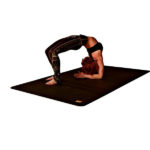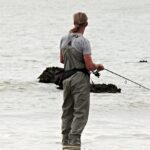Recent Posts
Skiing Vs Snowboarding: Differences
25th July 2023Best Tips For Fishing: Beginners and Intermediate Fishers
25th July 2023Cycling Safety Measures and Best Practices
16th July 2023Benefits Of Cycling For Physical and Mental Health
15th July 2023Safety rules for practicing block climbing

If you want to practice climbing entirely independently, it is essential to know safety techniques. Proper training is by far the best guarantee of safety. In case you start, you must contact a club or a professional to begin your initiation. Do not overestimate your physical and mental abilities by going directly up to a rock without training, because the mountain mistake is not forgiving and can be fatal.
Firstly
climbing with rope, speed or difficulty must be practiced by two minimum partners, a climber and at least one insurer (2 for speed events). Even though each partner has a specific role and a particular mission, they are interdependent. There is a real co-responsibility between the climber and the insurer (s) of their actions, and therefore of their safety. Excellent communication between the rope companions is, therefore, fundamental.
Concerning climbing on a block (without a rope), the practitioner occupies, in turn, different roles: climber, then betrayer, then in rest or waiting for position. The “blocker” has some responsibility for safety and must remain constantly vigilant in the reception area (when he is a climber or partner) and the waiting or rest area.
Choose climbing routes adapted to your level
It is essential to inform yourself and select climbing routes that correspond to your level of practice and that of your teammates. Do not go climbing Mont Blanc without being physically and mentally prepared. Otherwise you risk leaving your life and that of your partners.
Always wear a helmet
The helmet is vital because it protects you from falls of stones or materials, as well as the possible shocks during a fall. All climbing practitioners (climbers, insurers, coaching) must wear a helmet. This security requirement is also required for all professionals of the FFME and its structures (federations, committees, clubs).
Climb with new and proper quality equipment
The main recommendation is to use original equipment that meets the requirements of the European “mountaineering and climbing equipment” safety standards. To ensure your safety, the climbing equipment you must use must be affixed with CE marking. It is essential to read the manufacturer’s manual for the best use of the equipment. After having opted for quality equipment and especially in compliance with safety standards, each climber must carefully check the condition of its material before each use.
Connect with a node at eight followed by a stopping node
It is necessary to be very vigilant and never be distracted during this operation. Check the knot carefully with your climbing partner, as well as your belay system before starting the climb. Always tie a rope.
Ensure that each maneuver is performed correctly
Climbing requires constant concentration to prevent the worst from happening. If you play the role of the insurer, pay attention to your partner consistently.
Recent Posts
Techniques and Best Practices for Anglers
21st November 2023Hiking Vs Trekking: Differences and Similarities
12th August 2023How to Lose Weight by Cycling
12th August 2023How to Choose Skis for Beginners
12th August 2023Related Articles
Types of Hiking Trails: Options to Explore
Hiking captures the hearts of people across ages and fitness levels as...
By Fortunatus Adunola25th July 2023Benefits Of Cycling For Physical and Mental Health
Cycling, a broadly embraced hobby, brings forth manifold blessings for each physical...
By Fortunatus Adunola15th July 20235 proven strategies to teach your child skiing.
It’s done, your holidays in the mountains are reserved! To you, the...
By O. Johnson Taiwo11th June 2019Five Activities To Do With Children
Going skiing with kids can often be stressful for parents. But do...
By O. Johnson Taiwo11th June 2019














